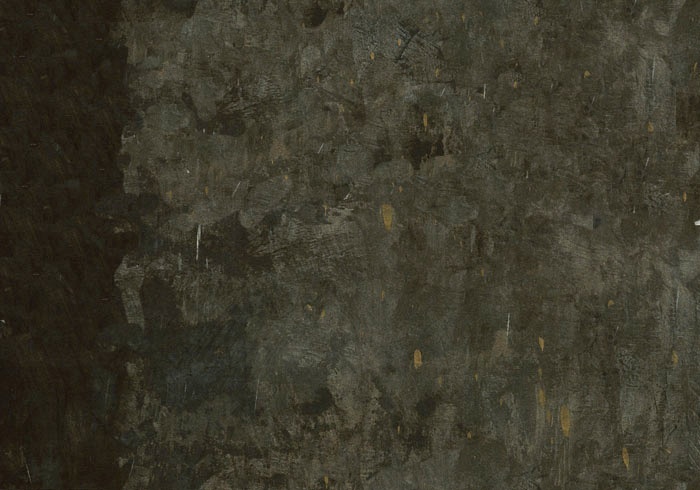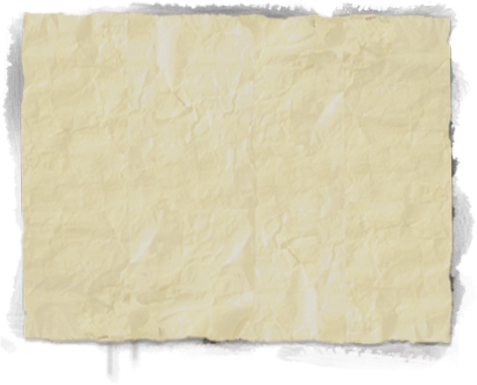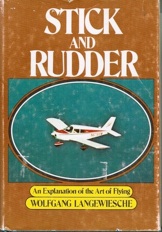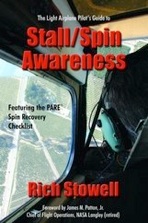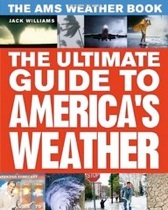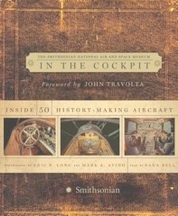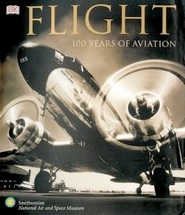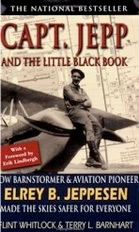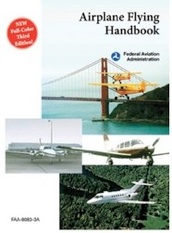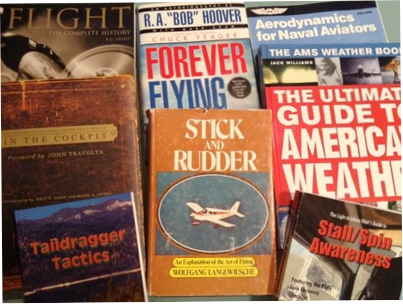I get asked by students from time to time to recommend my favorite aviation-related books. In the last 40+ years, I've probably read or referenced many dozens of aviation books. Here, in a couple different categories, are some of my most-highly recommended. Click on the image of any book for the link to the Amazon page for that title.
Best Overall Aviation Book
Stick & Rudder by Wolfgang Langewiesche - I first read this book when I was 15 (I still have the original copy). While written in the
1940's, it provides basic insight into how airplanes are flown. You have to get used to the author substituting the word ‘buoyancy’ for ‘lift’ and ‘flippers’ for ‘elevator’, but otherwise it’s an easy, non-technical read for budding pilots. To this day, I still use the "pitch for airspeed; power for altitude" picture from the book with beginning students.
Technical Books Worth Perusing
Aerodynamics For Naval Aviators – If you’re working on your Commercial or ATP rating, or you’re a pilot that just wants to dig
a little deeper into how all this aerodynamic stuff works, this book is worth a look. Sometimes it gets a little too technical for my pea-brain to understand, but the 500 charts, diagrams and pictures (pictures are good) sure helps understand a lot of what’s going on with the airplane during flight. This is a ‘public domain’ book that is offered for sale by several different publishers, much like the FAA books, or you can download the PDF by
clicking here.
Stall/Spin Awareness by Rich Stowell. Rich takes you through a history of stalls & spins, what we've learned over the years, and
why/how adding power, not neutralizing rudder, etc. only makes things worse. He explains in great detail why the PARE recovery method is best in most, but not all, airplanes. I’ve even bookmarked page 335, as I often have to reference that page to students and pilots that don’t understand you’re more apt to get into a spin from straight & level flight than you are while slipping. The appendix profiles spin recovery techniques for dozens of aircraft; the Piper Tomahawk gets its own section.
For Student Pilots
Student Pilot’s Flight Manual by William K. Kershner. First
published in 1960, Bill Kershner was the instructor’s instructor. He does a superb job of breaking down the tasks, maneuvers and landings required to become a private pilot in a detailed yet easy-to-understand manner.
The Ultimate Guide to America's Weather, by Jack Williams. While
not devoted specifically to weather as it relates to aviation, there’s a lot in here for students and pilots. Encyclopedia quality text and graphics but easy to understand. Jack is a pilot and writes weather articles for AOPA’s
Flight Training magazine. If many of the graphics in the book remind you of
USAToday, that’s because he was the person that designed their first weather page back in 1982.
Everything Explained For The Professional Pilot, Richie Lengel. A must if you're considering pursuing a Commercial ticket or flying
Part 121 or 135. This is not a book you are likely to read ‘cover-to-cover’. It’s more likely you’ll use it as a desktop reference, to look up some tidbit of information on which you’re a bit foggy. Richie has done a great job creating graphics to further illustrate the information (second only to what Rod Machado has created in his books). The 9th edition should be currently available.
Tailwheel Flying
There are probably less than a dozen books related to tailwheel
flying available, and I’ve read ‘em all. I like
Tail dragger Tactics by Sparky Imeson best. It’s chocked full of good tips & rules of thumb. I used it to build my syllabus for tailwheel instruction; it’s thorough but not too technical for pilots new to flying without training wheels.
Pure Entertainment (Aviation Porn)
In The Cockpit, Smithsonian Institution If you’ve been to the National Air & Space Museum, you’ve seen all the planes in this
book , only not up close. The pictures and binding of this book are among the most beautiful I’ve ever seen. Cockpit pictures of 50 history-making airplanes; from the Wright Flyer to Piper J-3 Cub to the Concorde. Makes a great gift for Dads ‘n’ Grads!
Flight; The Complete History, R.G. Grant. A companion guide to the cockpit picture book discussed above, this three-pound volume
from the Smithsonian takes you back to the start of it all right up through the Space Shuttle. Great graphics and interesting tidbits of information in the sidebars.
Capt. Jepp And The Little Black Book, Whitlock and Barnhart. I wouldn’t go out of my way to find this book, but if you happen
across it, read it. It’s the story of Ely Jeppesen (yep; that Jepp). He was a barnstormer and wingwalker in the early days of aviation. He started taking notes about obstacles and terrain and landmarks near towns and landing areas. Other pilots began asking for copies of his notes, and that’s where this classic rags-to-riches story begins. If you visit the Boeing museum in Seattle, they have a nice display of some of his early drawings and notes.
Non-fiction Reading
Forever Flying - Bob Hoover. I bought a copy at a Bob Hoover book signing, just so I could get his autograph, but thoroughly enjoyed
reading his trials and tribulations. I was struck by how many of his contemporaries (other than Chuck Yeager) perished in airplane crashes. Hoover tells one story about when he and Yeager were based in Dayton. There was an attractive female flight instructor at a nearby civilian airport, so Hoover took a few ‘lessons’ from her, and she signed him off to solo. He made sure Yeager was out there to watch on that day when he took the plane up and ran it through a series of aerobatic maneuvers all to her shock and horror. She soon figured out what was happening as many of Hoover’s buddies had gathered to watch his “first solo” in an airplane. No idea how true that story is, or how much it’s been embellished over the years, but it is a classic practical joke that had to have taken a few weeks of work and planning to get to the payoff.
FAA Books
The FAA produces some of the best training textbooks for students and pilots --- and they're all available for free download at
faa.gov (
click here for books link). The
Airplane Flying Handbook and
Pilot's Handbook of Aeronautical Knowledge are the two I suggest for students and Private Pilots. For Instrument students and pilots, the
Instrument Flying Handbook is a must-have. If you really must have the printed book, the AFH is available at Amazon; click image to the left.
Last but not least.... the POH of the plane(s) you fly most often! I never fail to pick out a nugget of information that I may have missed (or forgotten about) since my last review. Shortly after getting the Skylane years ago, I embarked on a cross-country trip to Florida. I spent several hours over Arizona and Texas reading every word in the POH on that trip. (Note to self: bring more reading material on those long coast-to-coast flights).
Enjoy your summer. Read a little, fly a little, read a little more.
© 2013 Garry Wing


